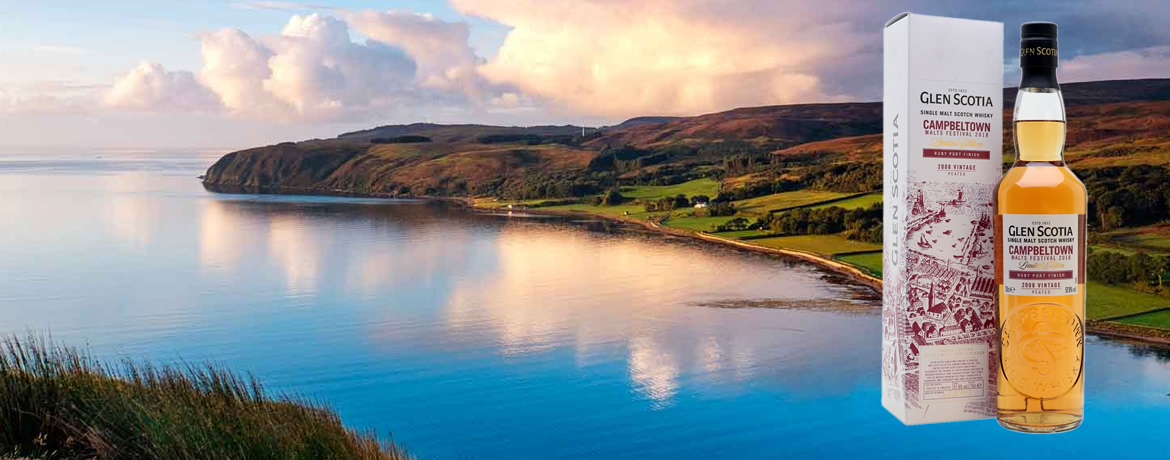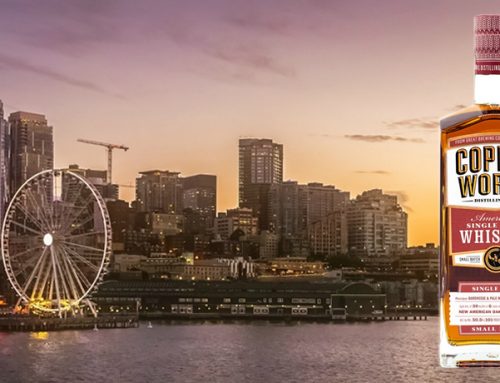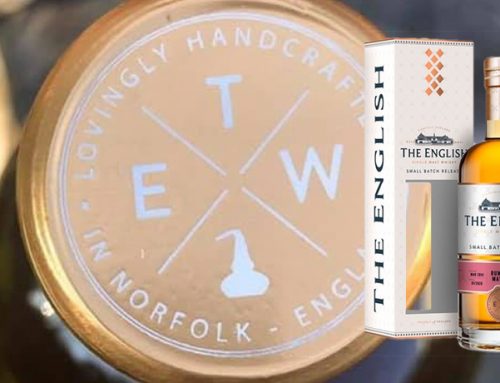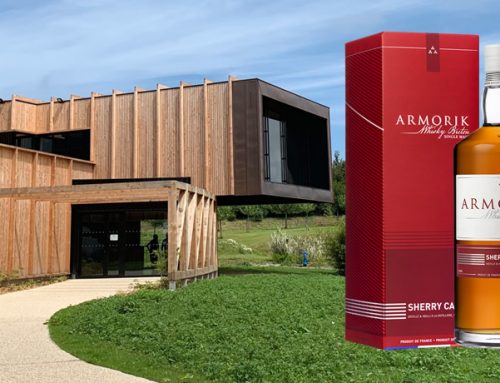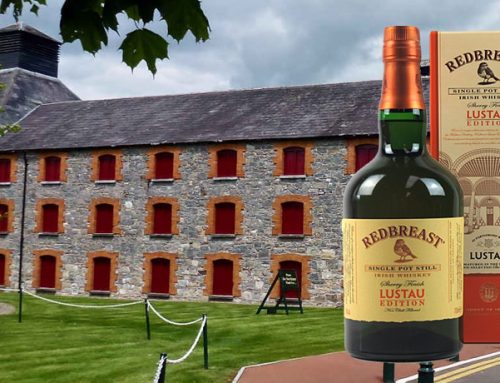The Glen Scotia Ruby Port Finish is limited to 6000 bottles. It was distilled in 2008 and aged in first fill bourbon casks for 9 1/2 years before being transferred to Ruby Port Casks to finish for 6 months more. Specially released for the 2018 Campbeltown Festival it’s been unavailable in Australia until now.
Nose is instantly honey notes with vanilla coming a close second. Medicinal/iodiney notes on the fringes.
Palate starts with a very satisfyingly warm total mouth coating with crisp sharp tangy raspberry or pomegranate notes but any sweetness disappears quickly to be replaced by a saltier tone. Very dry – but not astringent. The alcohol content is apparent only by the intense flavours – but is extremely smooth – there is no burn here.
Finish is long and satisfying, some spice on the tongue, salty, wafts of smoke but by no means what you notice first.
With a name like ‘Ruby Port Finish’ we have wanted to try this whisky since I heard about it a few months back. The fact that it was cask strength, non chill filtered and non-coloured ticked all the right boxes. Knowing it was only produced in limited quantities especially for the 2018 Campbeltown Malts Festival in May gave it that ‘out of reach’ feeling that made me want it even more. I’d just about given up hope of being able to try it when, lo and behold – I was contacted by someone who mentioned in the passing of our subsequent conversation that he had some of this whisky he could sell me. If I was interested. And so – we are absolutely chuffed to be able to offer the Glen Scotia Ruby Port Finish.
The Campbeltown region was once the most productive of all the Scottish whisky regions. Located in the south of the Mull of Kintyre (yes the same one Paul McCartney made famous) – Campbeltown whiskies have long been regarded as having a style of their own – hence being recognized as a distinct ‘whisky region’ of Scotland.
DISTILLERS NOTES
ABV: 47.8%
Bottle Size: 700ml
Region: Scotland -Campbeltown
Peated: No
Smoldering peat smoke is mellowed by sweet vanilla oak and blossom honey with raspberry coulis easing through. Freshly squeezed lime juice gives a citrus edge before cracked black pepper and tart, red fruit recurrent and cranberry. The finish is long with soft medicinal notes and a dry saltiness.
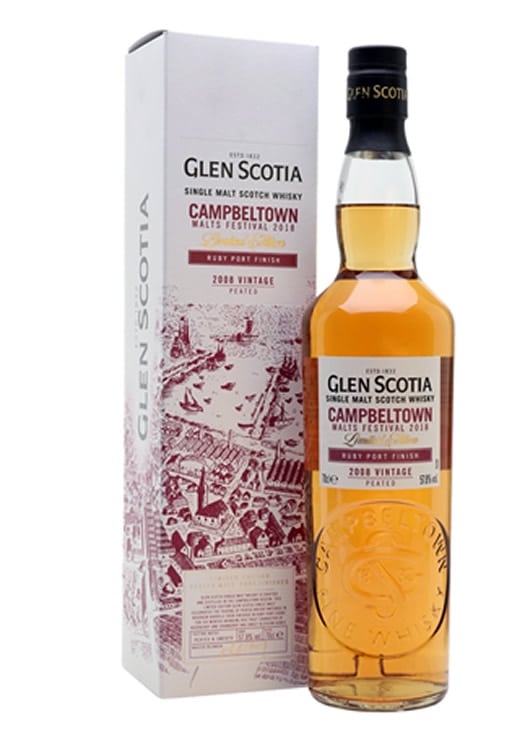
ABOUT THE DISTILLERY
The first record of commercial whisky production in Campbeltown dates back to 1636 – when the town was named Lochhead. The abundance of good water, peat and barley in the area made it perfect for distillers and whisky production (both legal and illicit) flourished. The fantastic natural harbour on which Campbeltown sits made distribution of the whisky easy as well as the import of supplies once the production outstripped the local produce.
One particular family of coppersmiths [with a penchant for meticulous record keeping] made over 50 distilling setups for illicit distillers between 1811 and 1817. Robert Armour’s (the coppersmith in question) stills book even records their locations! At the peak of it’s fame, in 1851, Campbeltown boasted no less than 29 legal distilleries.
Sadly today sees only 3 distilleries remaining in Campbeltown – Glen Scotia, Springbank and Glengyle. The reasons for this massive decline in numbers are many-fold. The closure of a major blending company (Pattison’s of Leith) could be said to have been instrumental in the start of the decline in Campbeltown’s whisky industry. The closure and subsequent defaulting of it’s loans caused 10 other distilleries to declare bankruptcy. Suddenly investor confidence in the Campbeltown industry crashed. An enormous surplus of Campbeltown whisky caused prices to plummet. Shortly after this WW1 began causing huge disruptions in international markets as well as issues in supply of barley. The US prohibition and UK temperance movement further strangled the life out of Campbeltown. A few substandard casks filled with poor quality spirit made it’s way to a blender and the reputation of Campbeltown was irrevocably tarnished just as the Speyside region was becoming a force to be reckoned with. There was even talk of ex-herring casks being used to age whisky, however it’s believed this is just a rumour started by Speyside distilleries.
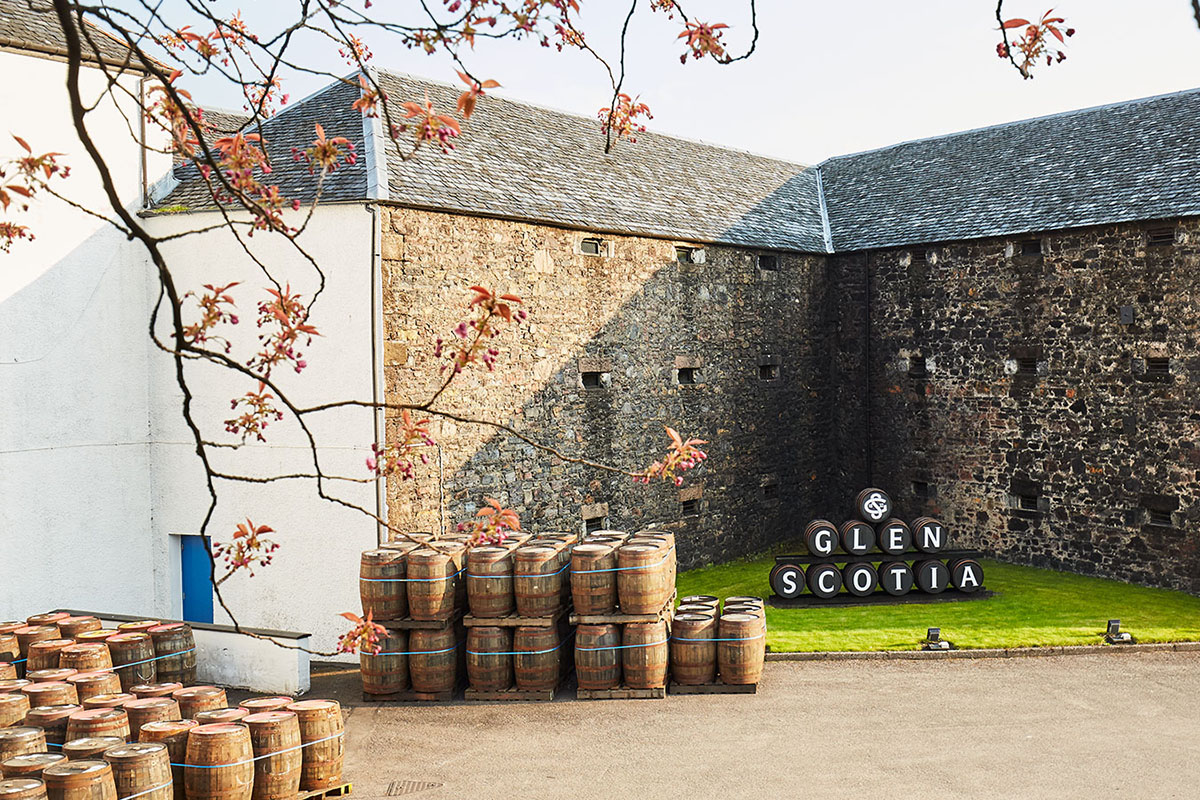
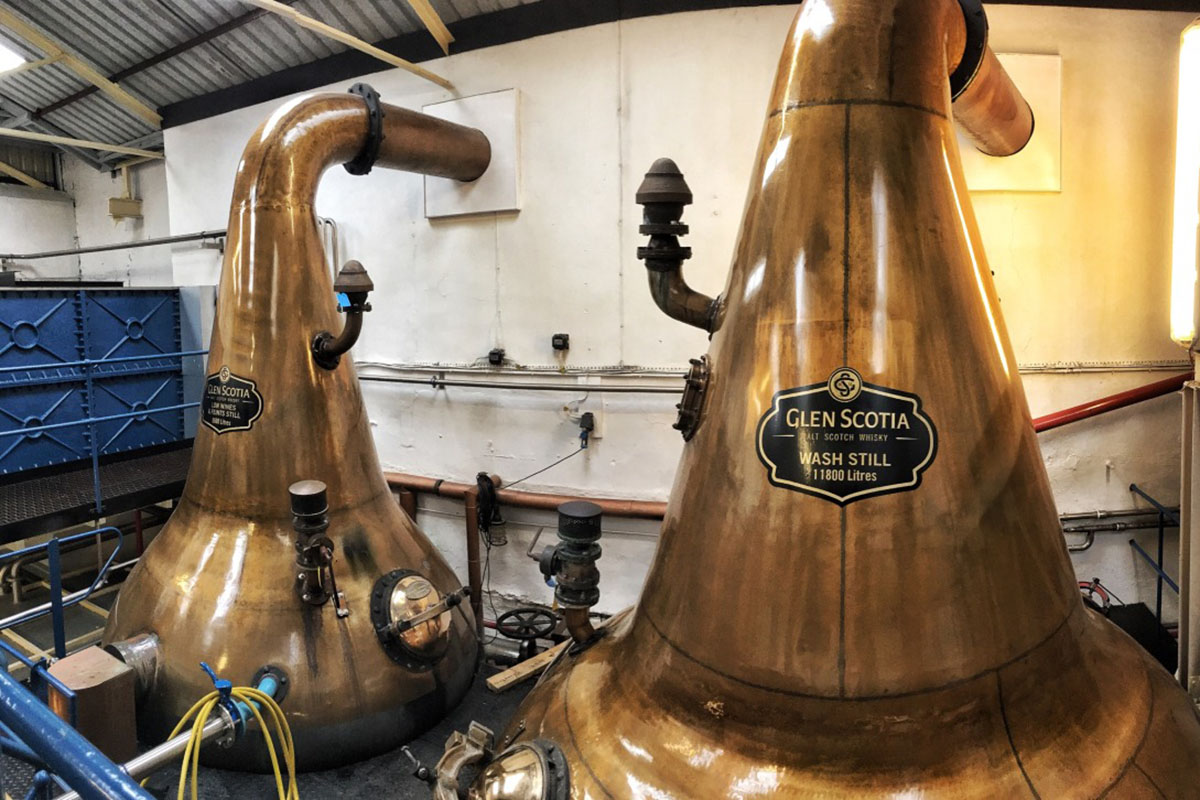
So it was a multi-faceted ‘perfect storm’ of factors all combined to leave the Campbeltown whisky industry with only 2 working distilleries by the year 2000. In fact – Campbeltown narrowly avoided having it’s status as a separate whisky region lost when the Scotch Whisky Association started talking about ‘declassifying’ it around this time. Luckily, a proud Hedley Wright – owner of Springbank (and descended from the original owner) – acquired and began restoration of Glengyle. By 2004 it began production. This bought the number of Campbeltown’s working distilleries to three – equal that of the Lowland region – thus guaranteeing it’s status as a separate whisky region.
The Glen Scotia Distillery was built in 1832 by Stewart, Galbraith & Co who ran it until 1895 when it was bought out by a consortium who purchased Glen Scotia along with 5 other Campbeltown distilleries. Unfortunately 5 of those failed and were closed – and Glen Scotia was sold to Duncan MacCallum in 1924. Sadly it closed down once more in 1928 only to be re-opened in 1930 by MacCallum who then promptly drowned himself. His ghost is said to haunt the distillery to this day.
Glen Scotia remains one of the smallest Scotch whisky distilleries in Scotland employing just 7 staff and producing around 500 000 litres of raw spirit a year. Much of the original distillery still exists – the still room, fermenters and warehouse date from the 1830s. These days it is owned by Loch Lomond Distillers.
